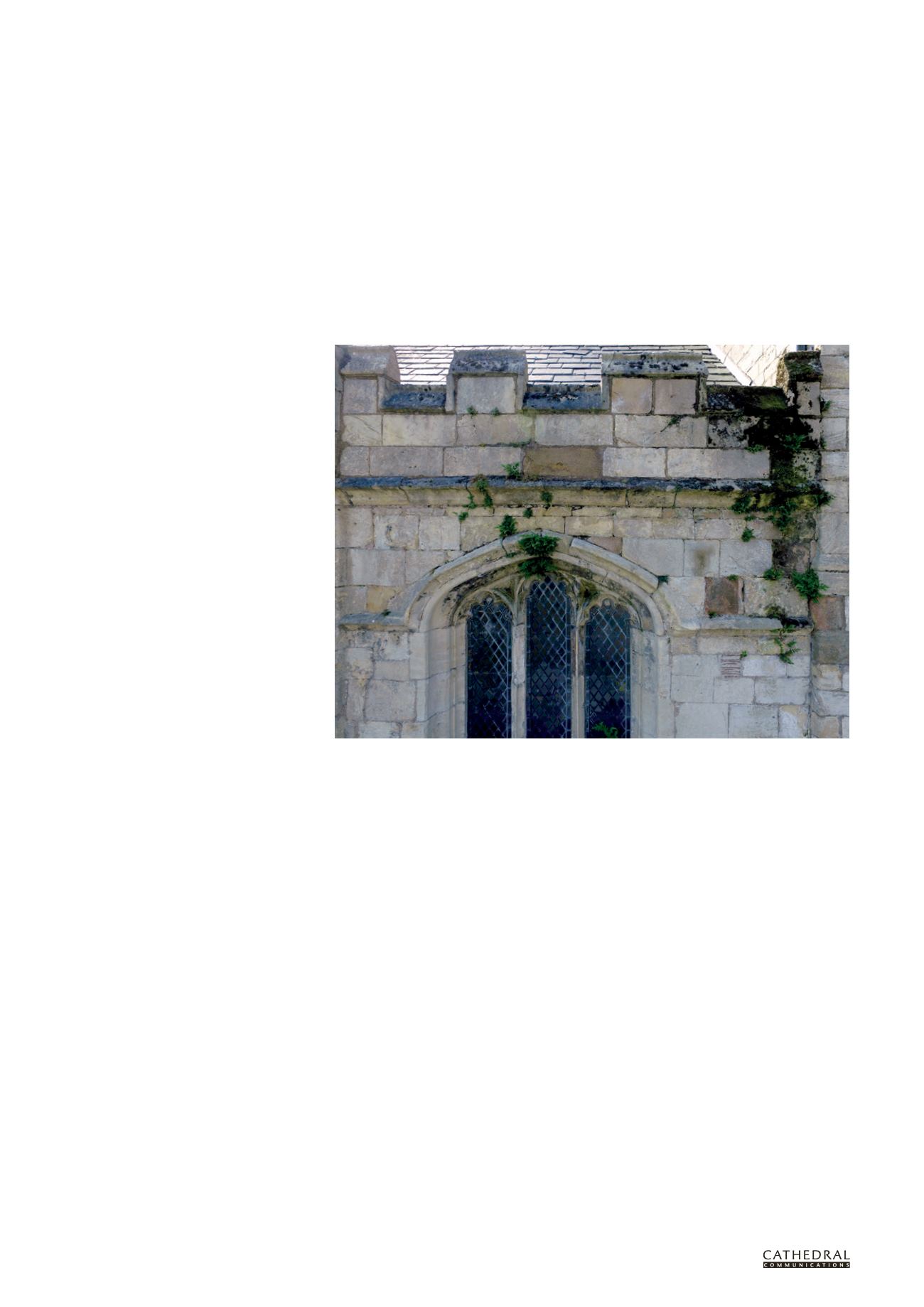

46
BCD SPECIAL REPORT ON
HISTORIC CHURCHES
24
TH ANNUAL EDITION
THE YORKSHIRE
MAINTENANCE PROJECT
Eddie Tulasiewicz
C
LEARING GUTTERS and fixing
leaking downpipes is the kind of
basic, routine work we carry out
on our own homes to keep them in good
condition and to avoid being saddled
with big repair bills when the roof starts
to leak. But sometimes dealing with
regular maintenance is the one job that
churches and chapels, all too often with
no paid building staff, find it difficult to
get around to.
That’s why the National Churches
Trust (NCT), with the support of the
Heritage Lottery Fund, has launched the
Yorkshire Maintenance Project, a new
scheme to help keep churches and chapels
in Yorkshire in good condition and avoid
expensive repairs.
The project will help to sustain the
rich religious built heritage of Yorkshire,
where there are 1,095 listed places of
worship including 346 Grade I churches,
buildings of the highest heritage
significance. As maintenance of these
important historic buildings is often
neglected, their future could be at risk.
The key aims of the Yorkshire
Maintenance Project are:
• to increase the number of Yorkshire
churches that regularly undertake
gutter maintenance
• to promote awareness of the benefits
of preventive maintenance through
training
• to improve knowledge of the
conditions of churches at high/
roof level
• to improve the condition of
historic buildings through regular
maintenance care and inspections.
THE NATIONAL SURVEY REPORT
Back in 2011 the NCT conducted a
survey to better understand the issues
affecting the sustainability of the
UK’s church buildings. The survey
gathered responses from more than
7,000 church representatives.
The trust’s national survey report
stated that ‘for those buildings in need
of them, the average cost of urgent
repairs is just over £80,000, including
VAT’. Assuming relative uniformity
given the sample size, there could
be a total urgent repair bill for the
UK’s Christian places of worship of
around £1 billion, including VAT.
Six years later, there is still a
significant backlog of outstanding
repairs. Efforts must be made to avoid
further damage and degradation of
church fabric through more effective
preventive maintenance practice so
that funding for repairs can reduce
the backlog rather than just trying to
keep up with ever-increasing need.
The trust’s 2011 survey confirmed
a positive relationship between formal
maintenance and general building
condition. When looking at all UK
church buildings, it is estimated that
more than 80 per cent of those which
are in good condition carry out regular
maintenance, 13 per cent of them in
accordance with a formal maintenance
plan agreed with a qualified professional.
Conversely, for those in poor or very
poor condition, barely more than half
carry out regular maintenance.
THE YORKSHIRE
MAINTENANCE PROJECT
The Yorkshire Maintenance Project
has three key parts – drone surveys,
church maintenance training and
the MaintenanceBooker web-based
maintenance service – which are
described in more detail below.
Drone surveys
Every five years, churches are inspected
internally and externally by a qualified
architect or surveyor as part of its
quinquennial inspection. The upper
parts of the building are studied from
the tower, if the church has one and it is
accessible, or from the ground using a pair
of binoculars. It is not possible, however,
to see certain parts of the building from
these two vantage points or to see them
Typical signs of damp caused by an overflowing parapet gutter


















